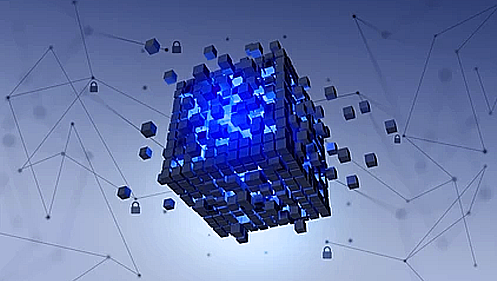Accredited InvestorsAltcoinAnatoli UnitskyAnti-Money Laundering (AML) In CryptoAPIArbitrageArtCoin TokenArticle DirectoryASICAuction Terminology GlossaryBasics of Stock Market InvestingBear MarketBest Crypto Payment Provider In the WorldBitcoinBlockchainBlockchain ConfirmationBlockchain Consensus MechanismBlockchain ForkBlockchain GlossaryBored Ape Yacht ClubBuild a Business That OutperformsBull MarketBuying SkyWay SharesByzantine Fault Tolerance (BFT) ExplainedCasascius CoinCentral Bank Digital Currency (CBDC)Centralized Crypto ExchangeCoinCoinsetCold WalletCollateralCommodity Futures Trading Commission (CFTC)Cross-Chain TechnologyCRUCrypto ExchangeCrypto GlossaryCrypto JokesCrypto Terms to KnowCrypto TickerCryptocurrencyCryptographyCryptojackingCryptounit BlockchainCryptounit GlossaryCryptounit ProgramdApp (Decentralized Application)Dead CoinDecentralized Exchange (DEX)Decentralized Finance (DeFi)Difference Between Bitcoin and EthereumDifferent Ways of Investing MoneyDigital CurrencyDistributed LedgerDo Your Own Research (DYOR)Dollar Cost Averaging (DCA)Dow Jones Industrial Average (DJIA)EncryptionERC-20ERC-721EthereumEvoScentFear Of Missing Out (FOMO)Fear, Uncertainty and Doubt (FUD)Fiat MoneyFNT Fintech CompanyGenesis BlockGlobal Unit PayGlossary of Banking TermsGlossary of Business TermsGlossary of Financial TermsHalvingHODLHot WalletHow Do I Start InvestingHow Rich is Satoshi Nakamoto?How to Create a BlockchainHow to Find Private InvestorsHow to Get Into FintechHow to Program Smart ContractsI Am Thrilled to Be a Part of This Global ProjectInitial Coin Offering (ICO)Initial Public Offering (IPO)Initial Token Offering (ITO)Innovation Basalt TechnologyInnovative Transportation TechnologiesInternational Bank Account Number (IBAN)Investing in Gold Mining StocksInvesting in Gold MiningJagerJoy of Missing Out (JOMO)Know Your Customer (KYC)LedgerLiquidity in CryptocurrencyMaker and Taker Fees in Crypto TradingMarket Capitalization (Market Cap)Meme CoinMetal Credit CardMetaMaskMillenials Now Have Access to Generational WealthMy Best Investment EverNew Digital EvolutionNFT GlossaryOff-Chain TransactionsOn-Chain TransactionsOpen Edition NFTPeer-to-Peer (P2P)Personal Loan GlossaryProbably the Best STO on the MarketProof of Stake (PoS)Real Estate Glossary of TermsReal Estate Investing GlossaryRebase TokenSecurities and Exchange Commission (SEC)Security Token ExchangesSecurity Token Offering (STO)Soulbound Decentralized Identities for Security TokensSoulbound ID Launch by Stobox Proves a SuccessSoulbound TokensStoboxStock Market GlossaryTestimonialsTether Platform and Token (USDT)UnitEx ExchangeUnitsky String TechnologiesUNTBUSDUValidatorWe Started Investing When We Were 25What are Blue Chip NFT?What are Blue Chip Stocks?What are Crypto Assets?What are Crypto Smart Contracts?What are CryptoPunks NFT?What are Digital Assets?What are Digital Collectibles?What are Gas Fees?What are Gas Wars?What are Hashmasks?What are Non Fungible Tokens?What are Non-Sufficient Funds (NSF)?What are Soulbound Tokens (SBT)?What are Stablecoins in Crypto?What are Transactions Per Second (TPS)?What are Utility NFTs?What are Utility Tokens?What Does Burning Crypto Mean?What Does Diamond Hands Mean?What Does Paper Hands Mean?What Does To The Moon Mean?What Does WAGMI Mean?What Happened to Satoshi Nakamoto?What is a 51% Attack?What is a Baby Boomer?What is a Backlink?What is a Banner?What is a Barcode?What is a Bid-Ask Spread in Crypto?What is a Block in Blockchain?What is a Block Reward?What is a Blockchain Address?What is a Blockchain Node?What is a Blockchain Oracle?What is a Blog?What is a Bond?What is a Bot?What is a Broker?What is a Business Accelerator?What is a Cash Cow?What is a Commercial Bank?What is a Commodity?What is a Con?What is a Credit?What is a Credit Limit?What is a Credit Rating?What is a Crypto Airdrop?What is a Crypto Bridge?What is a Crypto Scam?What is a Crypto Token?What is a Crypto Wallet?What is a Crypto Whale?What is a Crypto Winter?What is a Cryptocurrency Public Ledger?What is a Cryptocurrency Roadmap?What is a DAO?What is a Dark Pool?What is a Day Trader?What is a Dead Cat Bounce?What is a Default?What is a Derivative?What is a Digital Credit Card?What is a Fiscal Quarter?What is a Fungible Token?What is a Governance Token?What is a Grace Period?What is a Hard Fork?What is a Hot Wallet?What is a Hybrid Blockchain?What is a Hybrid PoW/PoS?What is a Joint Account?What is a Market Cap?What is a Merkle Tree in Blockchain?What is a Mining Farm?What is a Nonce? What is a PFP NFT?What is a POS System?What is a Prepaid Card?What is a Private Blockchain?What is a Private Key?What is a Public Blockchain?What is a Public Key?What is a Reserve Currency?What is a Ring Signature?What is a Routing Number?What is a Rug Pull in Crypto?What is a Safe Deposit Box?What is a Satoshi?What is a Security Token?What is a Seed Phrase?What is a Shitcoin?What is a Sidechain?What is a Soft Fork?What is a Spot Market?What is a State Bank?What is a SWIFT Code?What is a Tax Identification Number (TIN)?What is a Time Deposit?What is a Transaction Account?What is a Variable Interest Rate?What is a Virtual Assistant (VA)?What is a Virtual Card?What is a Virtual Currency?What is a Visa Card?What is a Whitelist in Crypto?What is a Whitepaper?What is Accounts Payable (AP)?What is AMA in Crypto?What is Amortization?What is an Accrual?What is an ACH Transfer?What is an Actuary?What is an Addendum?What is an Algorithm?What is an Angel Investor?What is an Annuity?What is an Asset?What is an ATM?What is an Atomic Swap?What is an Audit?What is an Avatar?What is an EIN?What is an Embargo?What is an Entrepreneur?What is an IDO (Initial Dex Offering)?What is an Interest Rate?What is an Internet cookie?What is an Investment Bank?What is an NFT Drop?What is an NFT Floor Price?What is an Ommer Block?What is an Orphan Block?What is an Outstanding Check?What is an Overdraft?What is Artificial Intelligence (AI)?What is B2B (Business-to-Business)?What is B2G (Business-to-Government)?What is Bartering?What is Bitcoin Dominance?What is Bitcoin Pizza Day?What is Blockchain Immutability?What is Blockchain Used For?What is BRICS?What is Business-to-Consumer (B2C)?What is C2C (Customer to Customer)?What is Capitalism?What is Catfishing?What is CFD Trading?What is Check Kiting?What is Cloud Mining?What is Communism?What is Content Marketing?What is Decentralization in Blockchain?What is DeFi in Crypto?What is Delisting?What is Depreciation?What is Digital Marketing?What is Diversification?What is Double Spending?What is Dumb Money?What is Dumping?What is Earnings Per Share (EPS)?What is Economics?What is Email Marketing?What is Equity?What is Etherscan?What is Fintech?What is Foreign currency?What is Forex?What is Fundamental Analysis (FA)?What is GameFi?What is Generative Art NFT?What is Gwei?What is Hard Currency?What is Hash Rate?What is Hashing in Blockchain?What is Inflation?What is Initial Game Offering (IGO)?What is Interest?What is Interest Income?What is Mainnet?What is Mastercard?What is Metaverse in Crypto?What is Mining in Cryptocurrency?What is Minting NFT?What is Mobile Banking?What is Money Laundering?What is NFT Alpha?What is NFT Metadata?What is NFT Rarity?What is NGMI Meaning?What is Nominal Interest Rate?What is Online Banking?What is Open-End Credit?What is OpenSea NFT Marketplace?What is Personal Identification Number (PIN)?What is Play-to-Earn?What is Polygon?What is Proof of Authority (PoA)?What is Proof of Work (PoW)?What is Public Key Cryptography?What is Pump and Dump?What is Quantum Computing?What is Refinancing?What is Retail Banking?What is Ripple?What is Sharding?What is Slippage in Crypto?What is Smart Money?What is Solvency?What is Soulbound ID?What is SSL?What is Staking in Cryptocurrency?What is Technical Analysis (TA)?What is Testnet?What is the Ask Price?What is the Better Business Bureau (BBB)?What is the Bid Price?What is the Dark Web?What is the InterPlanetary File System (IPFS)?What is the Gold Standard?What is the Lightning Network?What is the Prime Rate?What is the Sandbox?What is the Secondary Market?What is the World Bank?What is Tier 1 Capital?What is Tokenomics?What is TRC-20?What is Universal Banking?What is Unspent Transaction Output (UTXO)?What is Usury?What is Volatility in Crypto?What is Wash Trading?What is Web3?What is Whisper?What is XRP?What is Zero-Knowledge Proof (ZKP)?Who is Beeple?Who is Satoshi Nakamoto?Who is Vitalik Buterin?Why Tokenization is a Safe HavenWhy You Should Try Your Hand at Trading
dApp
- Home
- Blockchain Glossary
- dApp
Applications known as dApps (Decentralized Applications) operate on a blockchain network, which is a distributed computing technology.

What is a Decentralized Application (dApp)?
Decentralized Applications (dApps) are a new type of software application that is rapidly gaining popularity due to its unique features and benefits. Unlike traditional applications, dApps are built on decentralized systems, such as blockchain technology, and do not rely on a central authority for data storage, management, or verification.
One of the main advantages of dApps is their security. Because they are built on decentralized systems, they are less susceptible to hacking, data breaches, and other security threats that traditional applications are vulnerable to. This means that sensitive information and data is better protected, and users can feel more confident in the security of their information.
Another benefit of dApps is their transparency. Decentralized systems are transparent by nature, meaning that anyone can view the transactions and data stored on the system. This increased transparency helps to prevent fraud and corruption, as well as allowing for more efficient and effective verification of information.
In addition to security and transparency, dApps are also more accessible to users. They are typically open-source and accessible to anyone with an internet connection, which means that they can be used by a wider range of people and organizations, regardless of their location or technical ability.
Finally, dApps are also more resistant to censorship. Since they are not controlled by a central authority, they cannot be shut down or censored by governments or other organizations. This makes them an ideal platform for sensitive information and applications, such as those related to privacy and freedom of speech.
How Does a dApp Work?
dApps have a distinct set of characteristics that define their functioning. Firstly, they are open-source, meaning that changes to a decentralized application are determined by a consensus of the majority of users. As a result, the application's codebase is made accessible to all users for review. They also have a unique feature of providing decentralized storage, which uses decentralized blocks to store data.
dApps are stored and executed on a blockchain system, usually Ethereum, and their validation is carried out using cryptographic tokens. To access the decentralized application, one must have these tokens.
While decentralization is the main attribute that sets dApps apart from traditional applications, there are several common elements that contribute to the functioning of both. Like other applications, dApps use front-end code to create a web page. However, their back-end code operates differently, relying on the decentralized P2P network instead of a single authority.
dApps are supported by smart contracts, which are used to enforce rules and mediate transactions. Unlike conventional applications, which require the support of centralized servers and databases, smart contracts are stored on a blockchain and play a crucial role in the functioning of a dApp.
Smart contracts run on a blockchain, which is a ledger of data records stored in blocks and distributed across multiple locations. Cryptographic validation links and governs these data blocks. To complete a decentralized application, a combination of multiple smart contracts and third-party systems for the front-end is required.
Advantages and Disadvantages of dApps
Many of the benefits of dApps revolve around their ability to protect user privacy. With decentralized applications, users do not have to provide their personal information to use the app's features. Instead, dApps use smart contracts to facilitate transactions between anonymous parties without relying on a central authority.
dApps can also serve as a means of promoting freedom of speech. For example, decentralized social media platforms can be developed that are resistant to censorship, as no single participant on the blockchain can censor or remove messages.
Ethereum provides the necessary infrastructure for the creation of new dApps, allowing developers to focus on finding innovative uses for digital applications. This could lead to the rapid deployment of dApps across a range of industries, including finance, gaming, social media, and e-commerce. However, the use of dApps is still in its early stages and faces some challenges, such as scalability and network congestion, particularly when an app requires significant computational power.
Another challenge is developing a user-friendly interface. Users of traditional, centralized apps have come to expect a certain level of ease and convenience, and transitioning to dApps will require developers to create an experience that rivals established programs.
Finally, dApps can also face difficulties in terms of making code modifications. Once deployed, dApps may require ongoing updates to enhance their features, fix bugs, or address security risks.
The Future of dApps in Cryptocurrencies
The arrival of dApps in the blockchain arena has sparked rapid growth and evolution in a short period of time. As they become integrated into various industries, they offer numerous advantages that make them an attractive option.
The increasing adoption of blockchain technology across industries suggests a rise in the popularity of dApps. In the future, it is expected that we will see a rise in stablecoins and the utilization of creative price-stabilizing methods.
Stablecoins offer a solution to crypto volatility by using mechanisms such as being pegged to fiat currencies or precious metals or backed by cryptocurrencies as collateral. With a growing number of stablecoins, there will be a corresponding increase in demand for decentralized applications built around these stablecoins.
Related Articles

Blockchain
Blockchain has been a major tech topic over the past 10 years, with widespread discussion but limited understanding of its concept and operation. Despite its complexity, the essence of...

Ethereum
It natively supports smart contracts, a key component of decentralized apps. Smart contracts are used in conjunction with blockchain technology in many...

What are Crypto Smart Contracts?
In other words, smart contracts are simply lines of code that perform a certain function when certain criteria are met. The code is normally followed by...

What are Stablecoins in Crypto?
Stablecoins have become essential components in the crypto world, offering important functions for investors and speculators.

Collateral
Cryptocurrencies can be looked at as a unique asset class. And, like other assets such as a stock, home, or vehicle, your crypto may be used as collateral for loans.
- Home
- Blockchain Glossary
- dApp